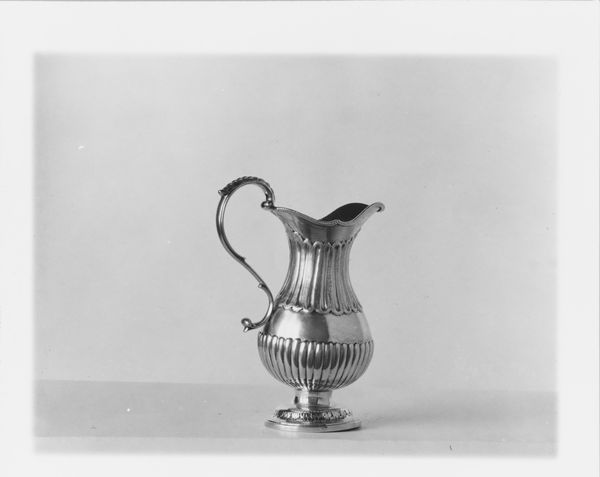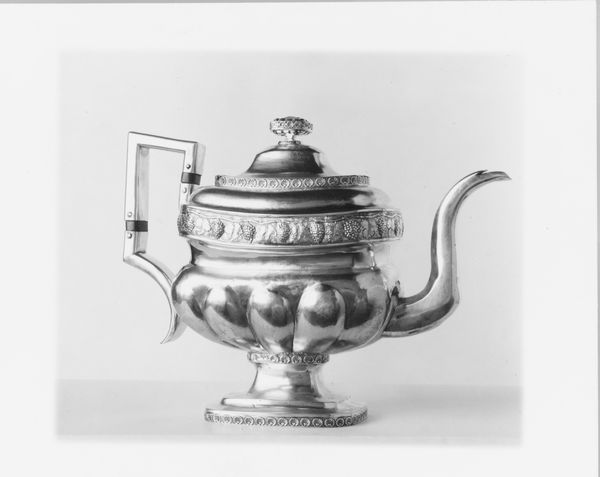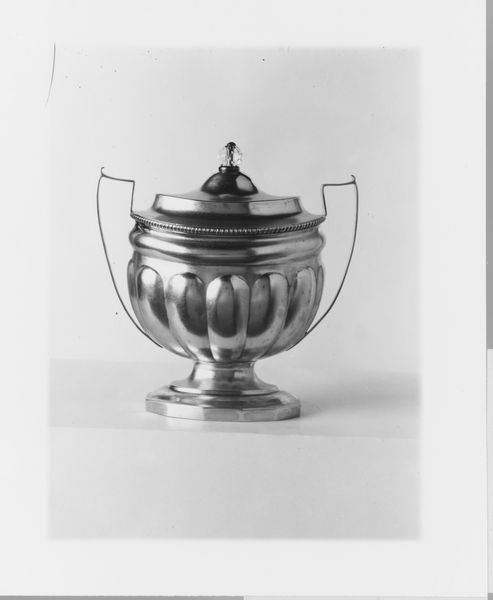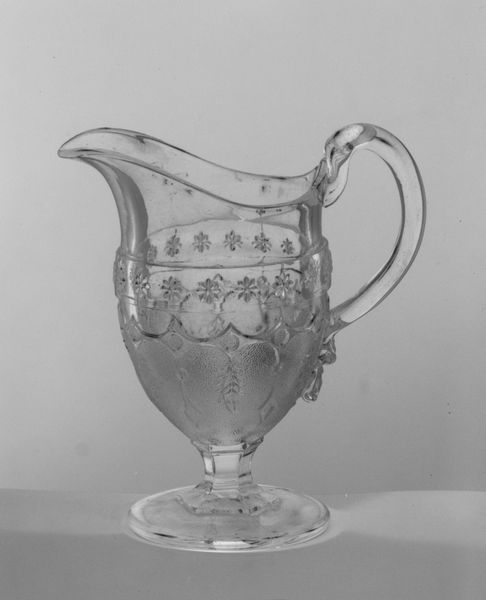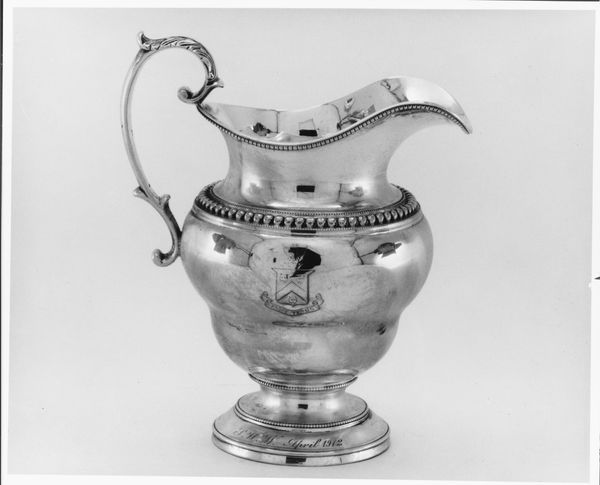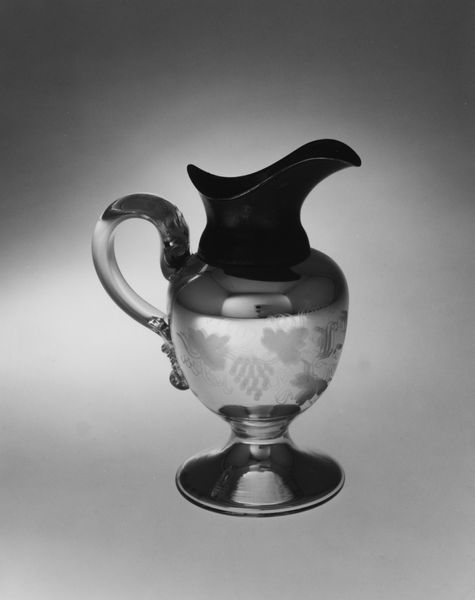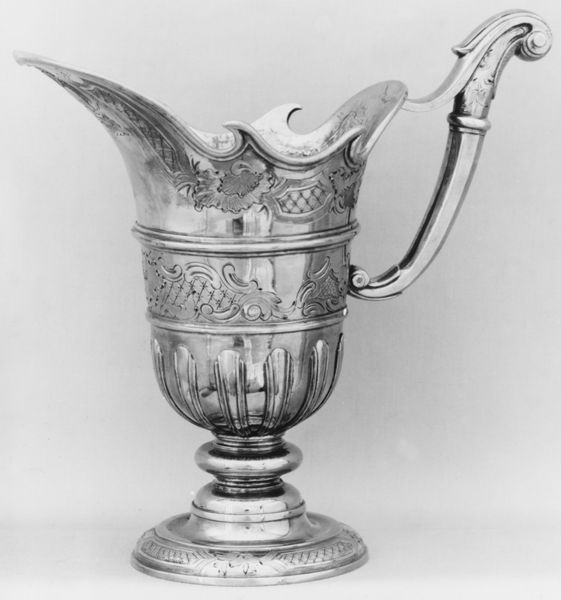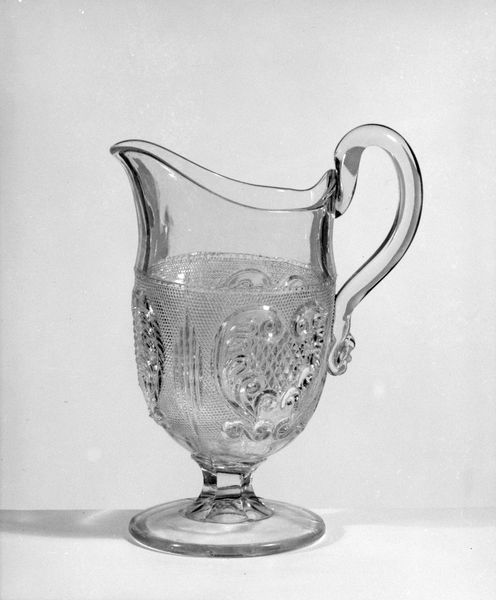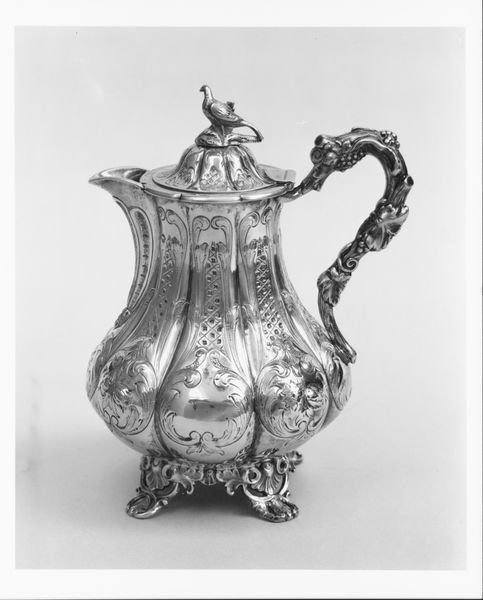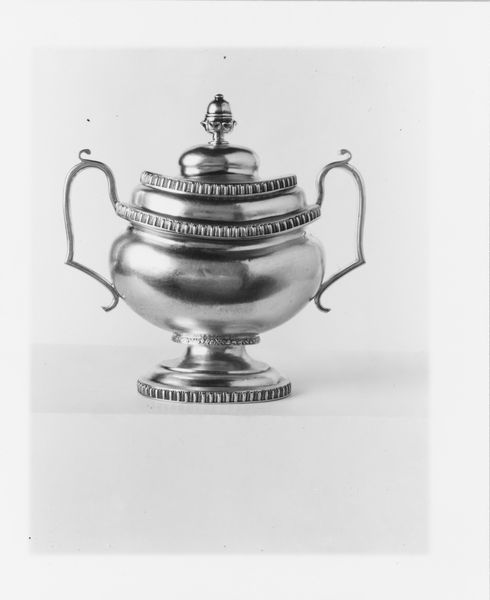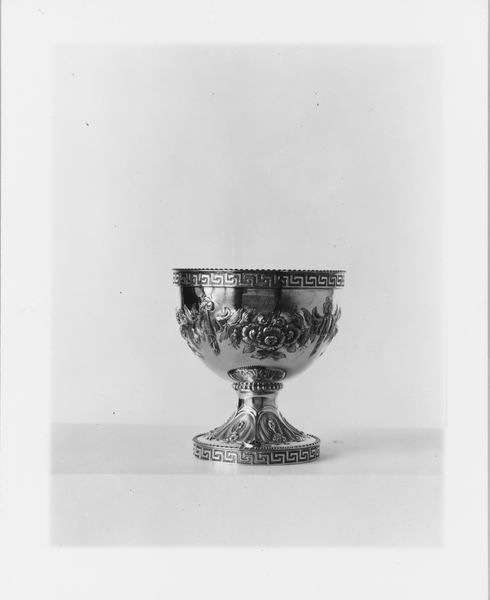
metal, sculpture
#
neoclassicism
#
metal
#
sculpture
#
sculpture
#
black and white
#
decorative-art
Dimensions: Overall: 8 11/16 x 6 9/16 x 4 5/16 in. (22.1 x 16.7 x 11 cm); 16 oz. 6 dwt. (506.8 g) Foot: Diam. 3 5/8 in. (9.2 cm)
Copyright: Public Domain
Curator: This is a Creamer, crafted between 1835 and 1845 by Robert and William Wilson. We find it as part of the Metropolitan Museum of Art’s collection in New York. Editor: Wow, that's fancy for serving cream! It looks like something out of a fairy tale, so delicate, like it should be holding a potion, not dairy. Curator: Precisely! Its Neoclassical style embodies the period’s revival of classical art and architecture, where aesthetics of refinement were intimately tied to social standing. Think about how the consumption of something as commonplace as cream could be elevated to an event signaling taste and wealth. Editor: True! It's hard to miss the overt signaling happening here. I imagine some serious side-eye happening over the breakfast table. The detailed sculptural work, those tiny figures—did someone really hand-chisel all that? I bet it's heavier than it looks. Curator: Most likely made of silver, its elaborate decorations—figures from mythology—speak to the aspirational narratives popular among the elite. It represents an American attempt to assert their cultural sophistication and connection to European artistic traditions at the time. Editor: Mythology…that gives it some heft beyond its shiny surface, doesn’t it? Makes you wonder who was pouring the cream. And what were they really thinking as they gazed at those mini-gods and goddesses? There’s probably a whole novel in this single cream pitcher. Curator: Exactly. It underscores how seemingly mundane objects participate in constructing complex power dynamics that define both gendered and classed interactions. Editor: Looking at this little shiny jug through that lens, it's like glimpsing into another world—one of powdered wigs, hushed whispers, and cream with a heavy dose of social anxiety! I never thought I’d get this contemplative over a milk jug! Curator: And isn’t that the wonder of art? Objects often deemed as simple decor can act as historical and societal reflections.
Comments
No comments
Be the first to comment and join the conversation on the ultimate creative platform.
